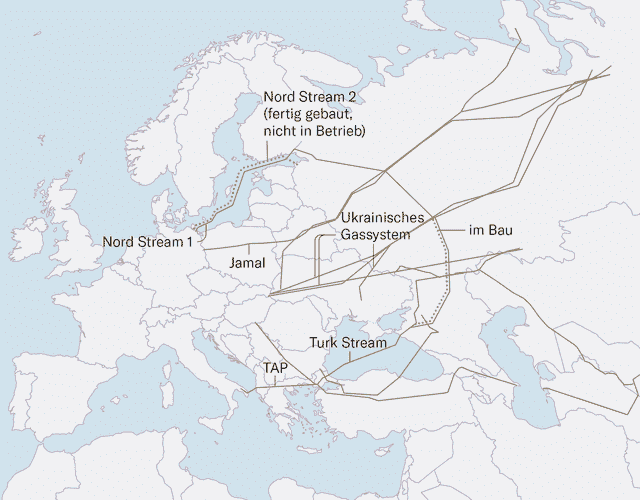In the two main gas pipelines from Russia to Europe, leaks have caused a sharp drop in pressure. The probable cause is attacks.
Nord Stream 1 pipeline in Lubmin, West Pomerania.
Late Monday afternoon, the pressure in the Nord Stream 2 gas pipeline, which has never been used before, collapsed. Just a few hours later, the operating company reported the same pressure drop in the Nord Stream 1 pipeline.
While the Nord Stream 2 pipeline was never commissioned after its completion, the Nord Stream 1 pipeline still had gas flowing through it until early September. Afterwards, Gazprom reduced the delivery volumes and finally stopped them altogether, with rather flimsy justifications.
It is therefore irrelevant for the gas supply in Central Europe that the capacities in both main pipelines have unexpectedly fallen to zero.
The fact that the pressure in both tubes dropped within a few hours cannot be a coincidence. An accident is unlikely as the two systems are independent. According to information from security circles, there are many indications that the lines were deliberately sabotaged.
Exclusion zone for ships
A leak was discovered late Monday evening in the Nord Stream 2 pipeline further north. As the Danish authorities announced, methane bubbles are bubbling out of the sea near the island of Bornholm. The leak is dangerous for shipping, it said. The police and navy have therefore set up a five-mile exclusion zone for ships, and air traffic below 1000 meters has also been prohibited.
No damage to the environment expected
From the point of view of the German Environmental Aid (DUH), there is no major danger to the environment, at least in the short term. Natural gas consists mainly of methane, which is partially soluble in water and is not toxic. The deeper the gas is released in the sea, the higher the proportion that dissolves in the water. Even in the case of an underwater explosion, there would only be local effects.
The double strand of the Nord Stream 2 pipeline runs 1,230 kilometers from Russia through the Baltic Sea to Germany. She is completed and filled with gas, but she has never imported gas. The federal government had put the approval process for the completed line on hold in February shortly before the Russian attack on Ukraine and even then emphasized that commissioning was out of the question.
The cause of the damage is still a mystery. The German Federal Ministry of Economics (BMWK) and the Federal Network Agency announced on Monday evening that they did not know the cause and were in contact with the authorities concerned.
Almost everything points to attacks. However, only complex investigations on the seabed can bring certainty. This requires submarines and navy divers.
Two possible scenarios
In the media is about two possible scenarios discussed:
- Ukrainian attacks: Ukraine could use targeted damage to ensure that gas from Russia can only be delivered to Central Europe via pipelines in Ukraine or Poland.
- Russia False Flag Operation: Russia could use attacks to try to exacerbate the energy crisis in Europe and drive prices even higher.

